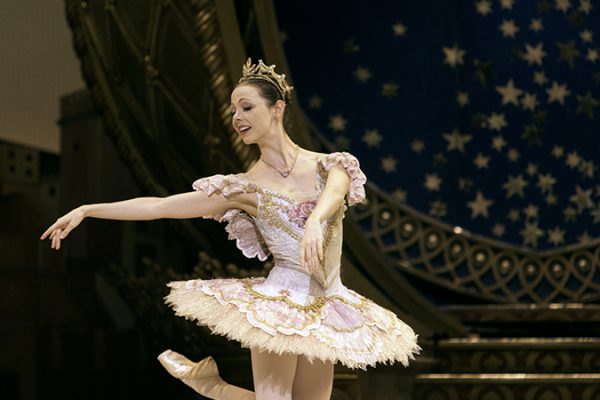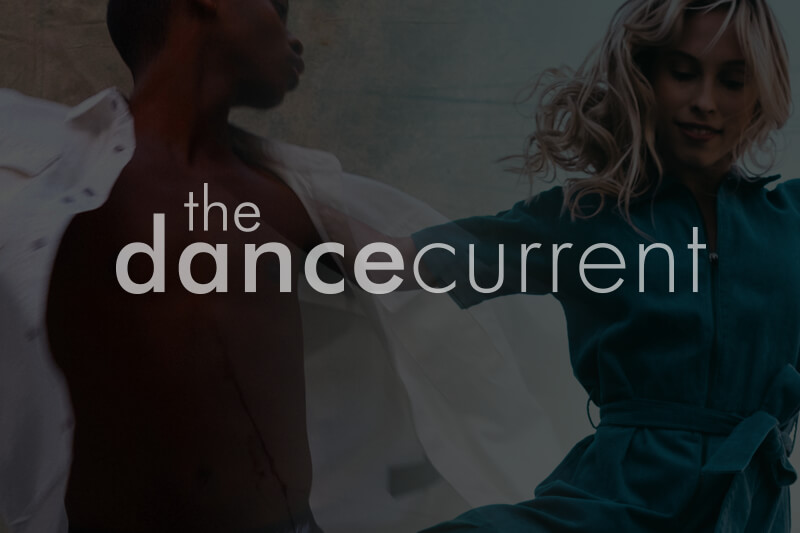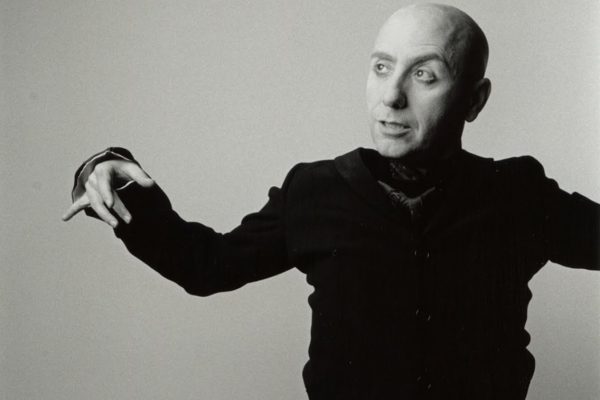Something is in the air. In terms of our world of mass-media public transmission and reception, the future is arguably optimistic. The arrival of anOther, by Montréal-based choreographer Dana Gingras (Animals of Distinction) and her excellent collaborators, signals a turning point in the intersection between dance, media and an immersion into cosmic speculation and sci-fi realm. The work is ambitious in its conception and execution, where nothing is quite as it seems.
In a darkened space, with the floor, walls and ceiling covered with a reflective, shiny black material (the sleek visual design of Mikko Hynninen), the audience views a wall of twenty-four television screens — flickering images filled with uninhabited urban underground spaces. A constant anonymous rumble of sound fills the space. It’s disconcertingly sinister, and the indeterminate grainy images on view are equally so. After much atmospheric visual distortion, we eventually glimpse the eyes of a woman, caught between sputters of what I’d like to call electronic slivering. Out of the blurry reverie, there’s something identifiable.
There’s sound and fury in the music, an unsettling sound mix, punctuated with intermittent thunderclaps and distortion, created by Group A (Sayaka Botanic and Tommi Tokyo). In this unstable universe, the musicians push the degree of sonic loudness we can tolerate, though it’s not always violent or harsh. In one intriguing section, the throbbing music beat increases, yet is interrupted by sounds of someone, but more realistically something, masticating.
Amid all the intensity and visions of seemingly apocalyptic passageways, other elements are quixotic. An alien-looking figure, completely cloaked from head to foot in a black, form-fitting unitard, enters the space, walking hesitantly and incrementally. The musicians are also cocooned in their own immersive world in an upstage enclosure, separated by a scrim that allows them to come into view and then fade away. At one point, another being (Gingras) eventually takes centre stage. The relationship between these two figures is not obvious, but the black-clad figure serves as witness, staying on the sidelines, observing but never interacting.
anOther has a dystopic beat at its heart, and it holds a mirror to consider the fragile world in which we are currently living. Visually, the barrage of strobe-like intensity and excess is steeped in fearful undertones. The piece’s mediascape is reflective of our steady diet of technological overload and dependence, and it is fascinating to contemplate. Using old-fashioned tube televisions, multimedia artist Sonya Stefan’s wall of screens is a relic and a playful reminder that technology is made to become obsolete.
Each subsequent image of static and disruption heightens the elusiveness of the incomprehensible. At one moment, an onscreen female body begins to materialize through the white static and then freezes. In presenting a series of distorted images, Stefan leads us into an examination of entrapment and image control, catching viewers staring back into the mediated glare of the images and screens. The impact of this apparent subversion prompts a new view of “to-be-looked-at-ness.” That term resided in feminist film theorist Laura Mulvey’s celebrated analysis of “woman as object of desire,” spectatorship, the male gaze and the associated challenge of negotiating gender roles and female representation. anOther is full of allusions to theoretical concerns, but it’s also adept in exploring an expanded sense of depth and the amplification of the moving body.
Whether we realize it or not, for many of us, the hundreds of horizontal lines that make up the television image are engraved in our collective memory bank. Dozens of these brightly coloured lines are transmitted each second, and the ones we see in the piece elicit a questioning of the need for a coherent image. In Stefan’s fragmented world, non-composition becomes composition, and retinal rivalry abounds. Each repeated view of the colour balance bar highlights convergence: the optics popping from sharpness and acuteness (I’m thinking film resolution) to modulation. The rhythm of her video editing is exacting, bending and stretching, breaking and transforming with sublime exactitude. The work is fundamentally contradictory, very intimate and quiet in its approach but ultimately lodging quite noisily in your head.
It’s almost as if the reflective surfaces which abound in the space, coupled with the disrupted transmission of images, might be used for surveillance purposes. If nothing else, the mirroring effect suggests that we are voyeurs watching for snippets of reality in the video images. Are Gingras and team consciously channelling French psychoanalyst Jacques Lacan, whose theories delve into the murky interchangeability of the symbolic dimensions of human experience? Gingras finally emerges as a chrysalis, in a latex outfit, from under the polymeric gel sheets that enveloped her body. She begins a frenetic trance dance, shaking and shifting to the beat of the music. This moment of liberation seems fleeting.
Placing the dancing body in competition with the busy set and sound pieces reduces its impact, and the dance became secondary and insignificant to the other highly engaging spatial and kinetic elements. As bold as the sonic and visual images are, the dance fades from memory. What can be gauged in this radical rethinking of a ritual for a mediated age is that the enigmatic anOther seems resolute to leave crucial questions unanswered.
Tagged: Contemporary, QC




